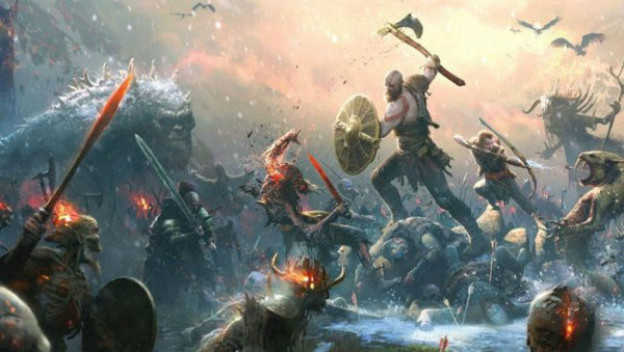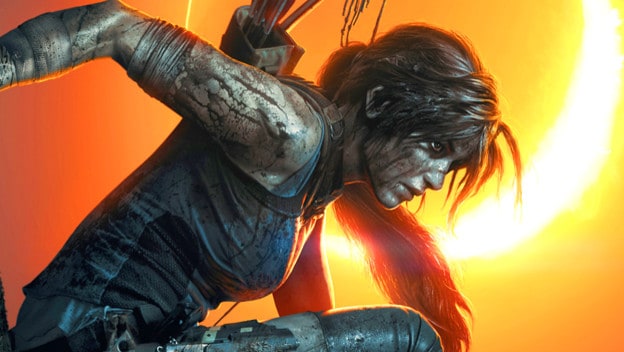Back when EA shut down Visceral, the studio behind the Dead Space series and canceled-slash-repurposed Star Wars game, a discussion caught on like wildfire: are single-player games dead? Of course, this was around when games like Destiny 2 and PUBG were on the rise, and the height of the great loot box disaster of 2017/2018. Things were looking bleak for pure single-player titles. Then God of War came out, and reminded everyone that single-player, AAA games can still happen and do well. Extremely well in the case of God of War , which did gangbusters and will probably outpace Horizon Zero Dawn at the end of the day. But then, a statement from the Shadow of the Tomb Raider team said something about new approaches needed for single-player games. Of course the community wasn’t too thrilled about that. So what’s the deal? Is single-player doomed or not? Well, it isn’t, but there’s a key difference between these situations we aren’t considering enough.
For the purposes of this discussion, we’re looking explicitly at single-player games in the AAA space. We’re not talking about games like Hellblade: Senua’s Sacrifice , which cracked the code in its own way with a smaller, “AA” approach. We’re not talking about indies like Super Meat Boy or The Witness . Or mobile games, for that matter. With the “are single-player games dead” question, people are talking exclusively about AAA, blockbuster-budget gaming, the output from the EAs, Activisions, Sonys, and Nintendos of the world. This is the space in which the gaming industry is shaped in a bigger sense, where all the money moves around, and where the dominant conversations exists. It’s also where all the messes and dumpster fires largely happen, hence this discussion in particular.
What do Destiny , Tomb Raider , and Dead Space have in common with each other, that God of War and Horizon don’t share? That’s right – these are third-party games from multiplatform studios. The other two games are first-party, same as games like Super Mario Odyssey or The Legend of Zelda: Breath of the Wild . The latter are games from studios owned by the hardware-makers, by companies that are enormous and have more money than you or I would know what to do with. Granted, that also applies to EA and Activision, but hear me out for a minute.
Activision and Square Enix are companies that only do software. They do merchandise and whatnot as well, but they live and die on the success of their games. This also applies to the studios that live under them. And the games industry is full to the brim of awful BS that essentially makes one big failure all it takes to sink a whole development house. Look to any Unseen 64 video to see how this has happened throughout history. If a studio can’t crank out a hit, it eventually shutters. Studios, like most companies, go on through contracts, and without contracts, and without contracts that lead to big profits, that’s it.
Meanwhile, a company like Sony or Nintendo can afford to eat dirt on an individual game or two. They’re hardware pushers – they have the money, and they need to invest it in order to sell hardware. Sony and Microsoft even have interests outside of videogames, while Nintendo these days is huge on licensing and merchandise (but the lifetime success of its hardware has made the company flush with cash). These companies often sink tons of money into exclusive, blockbuster single-player games because they can afford to, and that these games also sell hardware. God of War had a PS4 Pro bundle for a reason – games like that can be marketed as reasons to buy the platform they run on.
Third-party companies don’t have that. That’s why there’s so much discussion going on right now about labor practices, crunch, scale, microtransactions, so on and so forth. Game development in the AAA space really isn’t sustainable right now, and nobody have been able to crack the code yet. As demand for fidelity goes up, so do the budgets of games, so do the number of bodies needed to make them. But games haven’t gone up in price since the PlayStation 2 era, and that’s why we’re dealing with DLC, microtransactions, online passes, loot boxes, you name it.

Those are all companies trying to figure out how to avoid that nightmare scenario; the day the one failure sinks the whole ship. Just look at THQ and the uDraw tablet. An extreme example, but one that could easily point to the future of any other third party. One costly enough mistake is all it takes.
So have we answered the question or not? No, single-player isn’t dead. Sony can pump out as many God of War and Last of Us sequels as it wants as long as they continue to sell hardware. But as the industry exists, we’re going to have to continue putting up with developers tripping over themselves to justify “tacked-on” multiplayer modes, add-on purchases, and other incentives to spend money on games past the original retail price. It’s going to take significant change on the inside to make that stuff go away. And we’re a part of that too, but what that means is also a work in progress.
